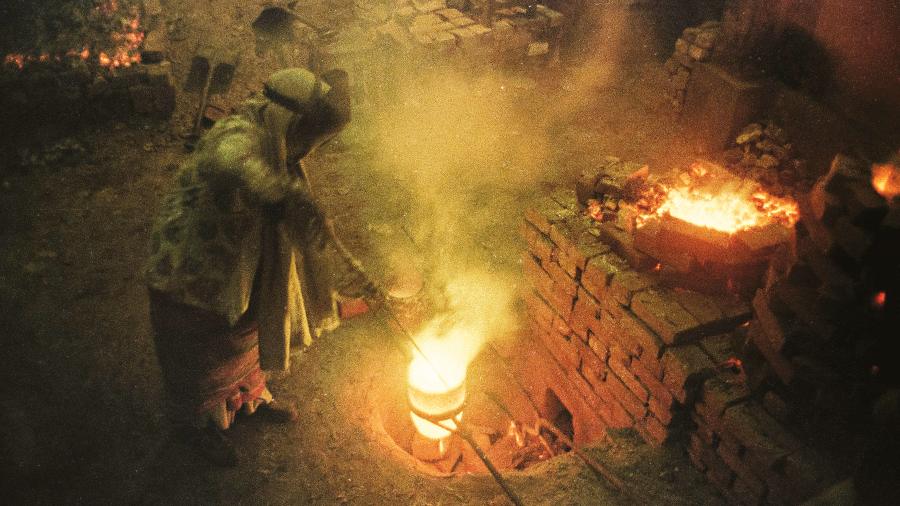In her book, Biswakarmar Sandhane (The Quest for Biswakarma), published in 1993, Meera Mukherjee (1923-1998) described how, many years earlier while doing a survey on art, she had met a group or community of people named Biswakarma. The members were spread all over the country. From whatever information she had gleaned 30 years earlier from Bengal, Odisha, Andhra Pradesh, Bihar and Uttar Pradesh, she realised that this community had a deep history and its significance was boundless. It was then that she decided that she needed to learn more about this community and work towards it.
This sentiment from the opening lines of Mukherjee’s book indicates how her research had influenced her thinking and work. Mukherjee used the indigenous lost-wax process of metal casting which she had learnt in Bastar during her cultural anthropology survey. She had amplified the lost-wax technique’s scope for innovative practice and ability to produce sculptures of varying scales. She set up a make-shift foundry for casting her sculptures at Elachi village on the southeastern fringes of Calcutta. With the active participation of a group of people who she had trained, she brought to fruition an intricate creative process she had started in her Bhawanipore home. Casting involved hard physical labour and this entire complex and arduous process had been documented meticulously by the photographer, Arun Ganguly, who was her neighbour at her Bhawanipore residence from 1978 till her death.
These photographs were displayed in an exhibition titled, Meera Mukherjee: Photographs by Arun Ganguly (June 17-July 30) at Galerie 88 to mark the sculptor’s centenary year. It was curated by Tapati GuhaThakurta and Adip Dutta, an artist who had known Mukherjee from his teens and had observed her process from close quarters as they lived in the same Bhawanipore neighbourhood. Ganguly had shot her in Bhawanipore as well as in Elachi, in both colour and black and white as the former is prone to fading out. Digital prints were displayed at the exhibition. While documenting Mukherjee, Ganguly used one Asahi Pentax S1a and an Asahi Pentax Spotmatic. The lenses used were Super Takumar 35 mm, SMC Takumar 35 mm and Super Takumar 135 mm. One camera for colour transparencies and one for monochrome.
The exhibition started with some photographs of Meera Mukherjee’s works and the images of those humble beings who had collaborated with her and enriched these. Nemai Bhaskar and Sajjad Mandal, who played vital roles in casting, and her constant companion, Idan Banu, along with others from her team were all present. Haradhan Ghosh, who worked independently, had welded together the limbs of the unfinished giant Buddha after her death and breathed life into it.
Mukherjee sits on the verandah of her Calcutta home, working on a form, with a pair of outstretched male arms helping her out. She is caught in action at the Elachi furnace, draped from head to toe in layers of cotton cloth, with a welding face shield for protection (picture). The passage of time is indicated by a teen Adip Dutta in a group snap. Arun Ganguly caught glimpses of her personal life too. Meera Mukherjee, also a classical musician, is deeply immersed in her singing. In a glowing frame, she and her partner, Nirmal Sengupta, who owned the Elachi plot, share a thought.










